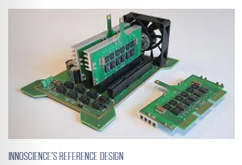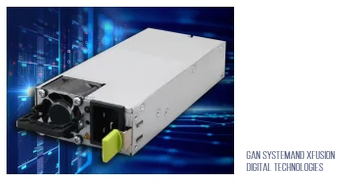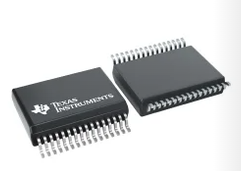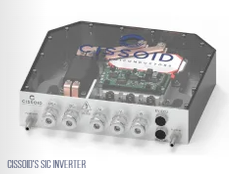Ecosystems put down roots for the power industry
The halls of PCIM Europe were buzzing with updates on GaN and SiC devices for industrial, automotive, and consumer applications.
This article originally appeared in the June'23 magazine issue of Electronic Specifier Design – see ES's Magazine Archives for more featured publications.
Caroline Hayes reports on the ecosystems bringing wide bandgap semiconductor technology to market.
Addressing GaN developments first, at this year’s show, EPC showed its latest GaN-based inverter reference design. Based on its EPC2302 eGaN FETs, the EPC9186 reference design demonstrates the suitability of GaN for high power motor applications in equipment, vehicles, and drones, says the company.
The reference design is for motor system performance, range, precision, and torque in high power applications, such as electric scooters, small electric vehicles, agricultural machinery, forklifts, and drones. The 150A RMS three-phase BLDC motor drive inverter uses four EPC2302 eGaN FETs and the reference design supports a wide input range of 14 to 80V, suitable for the high-power applications in machinery and high power drones, advises EPC.
The reference design showcases the benefits of a GaN-based motor drive, such as lower distortion for lower acoustic noise, lower current ripple for reduced magnetic loss, lower torque ripple for improved precision, and lower filtering to lower the cost of the final design.
EPC also offers the GaN Power Bench cross reference tool to help designers interested in replacing silicon MOSFETs with a GaN device in a design project. Suggested replacements are based on a design's operating conditions.
There was an update on Cambridge GaN Devices’ ICeGaN HEMT family, with the second generation of 650V devices. According to Nare Gabrielyan, the company’s Product Marketing Manager, the H2 series of GaN HEMTs features the NL3 (no load, light load) circuit integrated alongside the GaN switch for low power losses. Target applications are consumer products, such as fridges or phone chargers, said Gabrielyan, where they reduce size and weight of the end product by eliminating complex circuitry and delivering a QG that is 10 times lower than silicon parts and QOSS which is five times less to reduce switching losses at high switching frequencies. The smart gate interface virtually eliminates typical e-mode GaN weaknesses to improve robust over-voltage performance, high noise immunity, dV/dt suppression and ESD protection. An integrated Miller clamp eliminates the need for negative gate voltages, achieving true zero-volt turn-off and improving dynamic RDS(ON).
A prototype reference, jointly developed with Switzerland’s University of Bern was on display at the Innoscience Technology stand. The multi-level topology reference demo addresses 850V DC applications using 650V GaN in place of 1200V SiC, explained Innoscience’s General Manager, Europe, Dr Denis Marcon. The prototype, for use in e-mobility motor drivers, solar and industrial inverters, EV fast chargers and EV drivetrains, is currently with selected customers and will be available within six months. The three-level active neutral point clamped (ANPC) converter uses six Innoscience INN650D080BS 650V, 80mΩ HEMTs in 8.0 x 8.0mm DFN packages. The InnoGaN HEMTs switch at a higher frequency, with efficiencies of 99% allowing a reduction in the size of the filter and therefore the converter. It also negates the need for snubber capacitors or SiC diodes, reducing system cost, says the company.
Data centre power
At GaN Systems, the stand was divided into four market areas: consumer, industrial, data centre, and automotive. CEO Jim Witham pointed out the evolution of data centre power supplies and the benefits of smaller, efficient power supplies for factors such as operational costs as well as sustainability. Advances in 2023, says Witham, include using the GaN ICs with topologies that optimise heat transfer, daughterboards for heat syncing and reducing the size of transformers, magnetics and capacitors used in power supplies to harness the power of GaN to achieve more power and efficiency in smaller form factors.
For data centres, the industry is demanding 50% more power and more efficiency for energy savings, as well as more servers per rack for space savings.
“Customers implementing GaN Systems’ power semiconductors in their PSUs are seeing a continual increase in PSU power density from 45W/in3 to 63/in3, 82/in3, and now to 100W/in3,” Witham said.
The company has announced its collaboration with xFusion Digital Technologies for what is believed to be the first 100W/in3 data centre power supply. The xFusion 3kW power supply with 80 Plus Titanium efficiency uses GaN Systems’ power transistor which have demonstrated an increase in performance for products with power levels from 800W to 6kW. In addition to the high power density and efficiency of 96%, the power supply supports 90 to 264V DC and 180 to 300V AC input, 12V output. It is compact, measuring just 68 x 183 x 40.5mm.
For each set of 10 racks in the data centre, GaN-based PSUs can increase profits by $3m, reduce both the cost of operation and CO2 emissions output by more than 100 metric tons per year. Companies designing with GaN are doubling the power density of legacy PSUs, reaching power densities up to 100W/in3 with 96+% efficiency, resulting in power supplies half the size and half the power loss compared to silicon-based power supplies, says GaN Systems.
Rohm Semiconductors also highlighted the use of GaN in data centres. The company has begun mass production of 650V GaN HEMTs. The GNP1070TC-Z and GNP1150TCA-Z were jointly developed by Ancora Semiconductors, an affiliate of Delta Electronics. The latest members of Rohm’s EcoGaN range have built-in ESD protection element to improvs electrostatic breakdown resistance up to 3.5kV to improve reliability. The GaN HEMTs’ high-speed switching characteristics also contribute to greater miniaturisation of peripheral components, added Rohm.
Electric vehicles
Texas Instruments launched the UCC5880-Q1 reinforced isolated gate driver, which reduces switching losses to extend an EV’s battery range by seven miles per charge or the equivalent of 1,000 miles per year.
As electric vehicle (EV) design moves towards higher voltage systems (800V) based on SiC, efficient, isolated gate drivers are required for reliable traction inverters to maximise the drive range of vehicles based on high voltage semiconductors, explained Laszio Balogh, Senior Technologist for high voltage power at TI.
"Making SiC systems succeed requires an ecosystem, with gate drivers, sensors, all working together," he said. He outlined three key goals of electronics designers to address the charge time of EVs. These are efficiency, reliability - bearing in mind that gate drivers operate at 20kHz frequency or perform 20,000 switching operations per second, power density and design complexity.
The UCC5880-Q1 reinforced isolated gate driver complies with ISO 26262 for functional safety to ASIL. The driver's real time variable gate drive IP provides the flexibility when running the SiC to extend the driver per charge. By varying the gate-drive strength in real time, in steps between 20 and 5.0A, designers can improve system efficiency with the UCC5880-Q1 gate driver as much as 2% by minimising SiC switching power losses.
The integrated device also includes SPI (serial peripheral interface), SiC monitoring and protection and diagnostics for functional safety. The SPI programmability and integrated monitoring and protection features can reduce design complexity as well as external component costs, said TI. The company has also introduced an SiC EV traction inverter reference design which includes the UCC5880-Q1, Wolfspeed SiC devices, a bias-supply power module, real-time control microcontrollers and high-precision sensing.
Design tools
Simulation tools took a step forward when onsemi introduced the online Elite Power Simulator and Self-Service PLECS Model Generator software tools. (PLECS is the software tool for system level simulations of electrical circuits, developed by Plexim but adopted across the power industry.) onsemi announced the tools for its EliteSiC family in order to save designers time in selecting a product by being able to access simulation data. The models are generated based on typical or worst-case conditions and the designer can define application-specific parasitics such as layout, the number of components and inductance information, for example, to generate PLECS models for specific system-level simulations.
The tools can be used for designing ASICs, MOSFETs, discrete or module SiCs and are available free of charge and for limitless use.
An SiC inverter reference design was showcased by Cissoid. It was jointly developed with Silicon Mobility as a complete and modular reference design to reduce development time for electric motor drives up to 350kW/850V. At 400 x 400mm, the model was an update from the earlier, bulkier model. It uses Cissoid’s high voltage SiC-based power module, integrated gate driver board and control board with Silicon Mobility’s OLEA T222 field programmable control unit (FPCU), DC and phase current sensors, DC link capacitor and EMI filtering together with integrated liquid cooling. The reference design includes cables and sensors and is customisable with DC fixtures, said Cissoid’s CEO, Dave Hutton. Customers can buy the three-phase SiC inverter reference design from Cissoid with a license to use the Silicon Mobility’s OLEA App Inverter control software and design on top the software application. Cissoid will provide technical support to integrate the inverter into the final motor drive system before production.
The digital PCIM Europe 2023 event will be available online until 30 June 2023 at pcim-europe.com.
PCIM Europe 2024 will be held at the Nuremberg Exhibition Centre from 11 to 13 June 2024.









